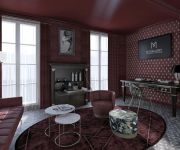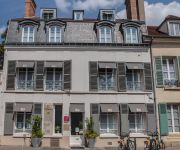Facts and Data
Webpages:
Official Unesco Page
Château de Fontainebleau
Basis Data:
Unesco World heritage since: 1981
Size of heritage: 144 ha
Coordinates:
Longitude: 2,698°
Latitude: 48,402°
Summary
Used by the kings of France from the 12th century, the medieval royal hunting lodge of Fontainebleau, standing at the heart of a vast forest in the Ile-de-France, was transformed, enlarged and embellished in the 16th century by François I, who wanted to make a 'New Rome' of it. Surrounded by an immense park, the Italianate palace combines Renaissance and French artistic traditions.
Location on Map
Show bigger map on Openstreetmap
Palace and Park of Fontainebleau: A Historic Gem in France
The Palace and Park of Fontainebleau, located in the Department of Seine-et-Marne in the Ile-de-France region of France, is a UNESCO World Heritage site that holds immense historical and cultural significance. This magnificent palace complex, spanning over 1,500 rooms and 130 acres of parkland, has witnessed centuries of French history and has been a favorite residence of numerous French monarchs.
Ancient Origins and Royal Residence
The history of the Palace of Fontainebleau dates back to the 12th century when a hunting lodge was built on the site. Over the centuries, it was expanded and transformed into a grand palace by successive French kings, including Louis VII and Philip IV. However, it was during the Renaissance period that Fontainebleau truly flourished under the reign of Francis I.
Francis I, a great patron of the arts, commissioned renowned Italian artists and architects to embellish the palace with exquisite Renaissance features. The result was a harmonious blend of French and Italian architectural styles, making Fontainebleau a unique masterpiece of the Renaissance era.
A Witness to History
Fontainebleau has witnessed numerous significant events throughout history. It served as the backdrop for royal weddings, diplomatic negotiations, and the signing of important treaties. It was also the birthplace and residence of several French monarchs, including Louis XIII and Louis XV.
During the French Revolution, the palace was looted and suffered significant damage. However, it was later restored by Napoleon Bonaparte, who used it as a residence and a symbol of his power. Napoleon's contributions to the palace include the famous Throne Room and the Ballroom.
Current State and Cultural Significance
Today, the Palace and Park of Fontainebleau stand as a testament to the rich history and cultural heritage of France. The palace is open to the public, allowing visitors to explore its opulent interiors, including the stunning François I Gallery, the ornate Napoleon III Apartments, and the iconic Oval Courtyard.
The park surrounding the palace is a haven of tranquility, featuring beautifully landscaped gardens, serene lakes, and picturesque walking paths. Visitors can enjoy leisurely strolls, admire the grand fountains, and discover hidden gems such as the Diana Fountain and the Grand Canal.
Fontainebleau continues to be a center for artistic and cultural activities. It hosts exhibitions, concerts, and theatrical performances, attracting artists and art enthusiasts from around the world. The palace also houses the National Museum of Fontainebleau, which showcases an extensive collection of art and historical artifacts.
The Palace and Park of Fontainebleau, with its rich history, architectural splendor, and natural beauty, is a true gem of France. Its UNESCO World Heritage status ensures its preservation for future generations, allowing them to experience the grandeur and magnificence of this historic site.
Hotels and places to stay
Hôtel Aigle Noir
La Demeure du Parc
Hôtel Mercure Château de Fontainebleau
Chateau de Bourron
Londres
ibis Château de Fontainebleau
Victoria
Hotel Terminus
Hotel Belle Fontainebleau
Videos from the area
Videos provided by Youtube are under the copyright of their owners.














